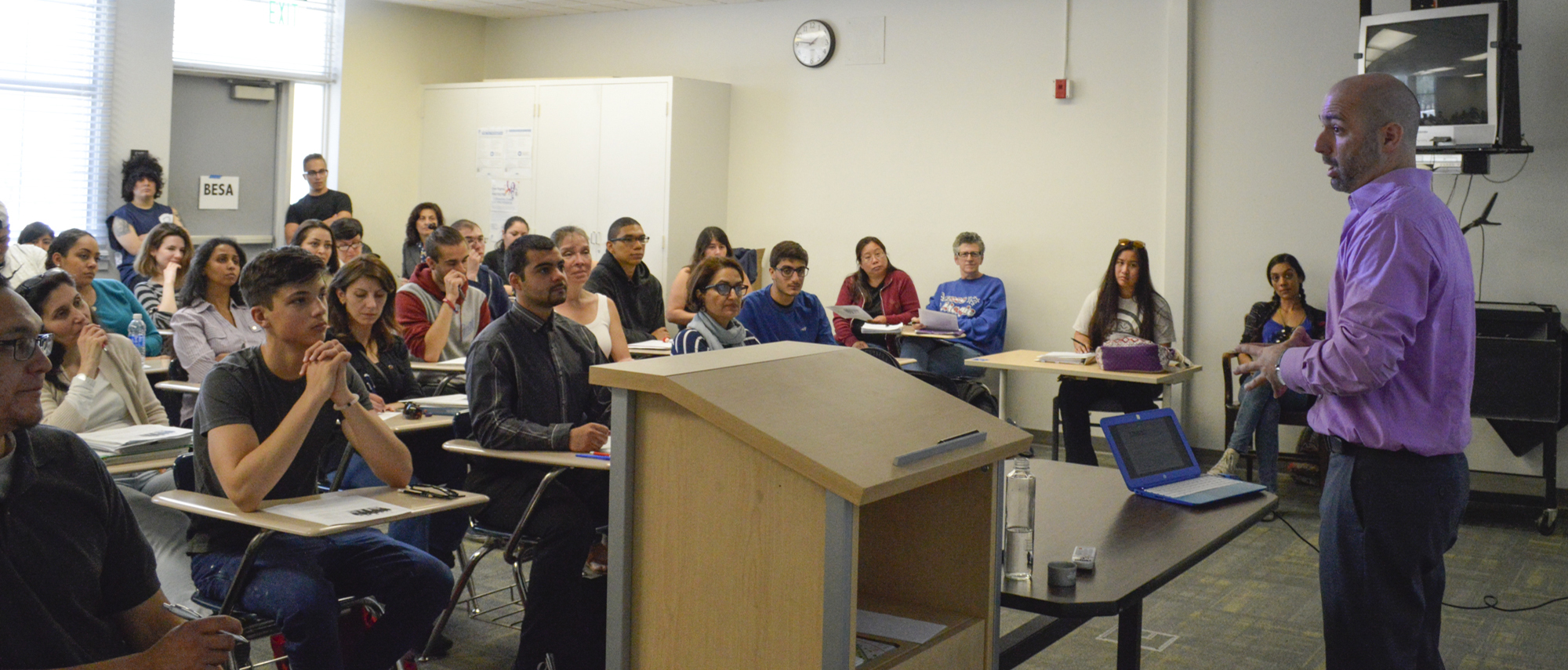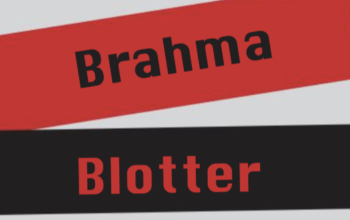There are a number of college students scavenging for jobs who don’t know how to go about doing an interview, how to dress, or what to have on their resume, which is why the Business Economics Student Association (BESA) had a Business professor guest speak during their meeting to provide tips to snare the job.
Throughout the meeting Business professor and Chair of the department, Martin Karamian, gave the students in attendance several guidelines but a few of them were essential to ways they could apply in any given situation such as going for an interview, having a meeting, or meeting someone new.
“The general rule is that it takes about four minutes for a person to make a decided opinion about you,” Karamian said. “Four minutes to decide if they like you or they don’t.”
The four minutes, however, do not commence when the person begins talking, but from the very beginning with the person’s surface language. The entirety of how a person presents their appearance is a factor of whether they will be a candidate for the job. Therefore, the first rule of success is to look successful, according to Karamian.
“Even if you’re the smartest person in the world and the best candidate, if you don’t look presentable than they are already forming an opinion that this is not the person they want for their business,” Karamian said.
Dressing professional does not have to be luxurious or expensive. Potential interviewees should keep everything of their appearance simple and casual. The best attire is to keep hair simple with no type of style, light makeup or none at all, wear neutral color shirts and jackets, no flashy jewelry for both male and females, slacks that are not too baggy for both genders and medium/ long skirts with black shoes.
“This all works for people when applying for a job, being interviewed for a school, or even applying for an apartment,” Karamian said.
Karamian made quick note about the body language of a person also being a catalyst when presenting themselves. Maintaining a confident body posture will inform the managers or business person that the employee is sure of himself or herself.
Another topic that Karamian touched base on was on constructing the best resume. A resume should be limited to one side of a sheet, using 12 point Times New Roman font in black, using underlines, bold, and large font for the person’s name. The resume should include the interviewee’s contact information [simple and not too elaborate], education history, work experience, skills and abilities, and any awards or recognitions [if applicable]. If a person wants to include an objective they can do so as long as they specify the position they are applying for, according to Karamian.
“If you want a specific position then you have to be clear in what it is you want because if you’re not then the employer will assume you’re looking for any type of job opening,” Karamian said.
The big component to a resume is always including the skills and abilities section, because it summarizes what the person has experience in. For the employment and education section, it depends on which one the person has a stronger background in and include that one first and it’s always good to put awards that the person has received. Karamian expressed that if a person has no employment history it is okay and if they have any history of doing volunteer work, walking a dog, or babysitting those are acceptable information, since it shows responsibility and trust from the person.
“Making sure that a resume is organized is another indicator of what type of person the interviewee is because if their resume is sloppy and disorganized then that shows that the interviewee is lazy,” Karamian said.
The last topic Karamian talked about was the effects that social media potentially has for a person applying for a job. When employers are hiring others they Google them now and they are particularly looking for whatever comes up, according to Karamian.
Karamian suggests to always Google yourself to inspect the first two pages that come up. It is suggested to make every social media a person has private unless it is for business purposes.
Having two different social media accounts is good, since one will be for social purposes only such as for friends and family and the other one will be for business with a professional headshot, the goals of the person, job titles/experiences and basically like your resume online.
“Everything you put on social media is forever even if you delete it immediately,” Karamian said. “So be careful.”
Malih Kabbani, who is the BESA Treasurer, said that he hopes the students who attended the meeting will be able to go to an interview prepared knowing what to expect and how to present themselves, because he knows sometimes many won’t know what to say, what to do, so want they want to do is prepare the students so they are aware of what to expect.
“Business isn’t just something you learn in a classroom,” Kabbani said. “It’s something you have to go explore and experience first-hand and work at it.”
Kaycea Campbell, Faculty adviser for BESA, said that the club wanted to give members practical experience in the work force, which is why they have these meetings.
“I tech Economics not Business and the club got the idea of soliciting the help of Business faculty to give students a real world application such as interviewing, resumes, what to do and not do and just practical information that won’t be learned from a textbook,” Campbell said.
Karamian expressed how he was surprised that many students showed up for the meeting considering that it had only just been announced.
“I didn’t think we were going to have a full house but I’m really glad that we did,” Karamian said.
Karamian also said that he spent a lot of time looking at the clothing that people are supposed to wear in a professional setting, because it’s a place where a lot of people get in trouble.
“Which is why we spent a lot of time looking at pictures of business people on how they dress and doing a head-to-toe analysis,” Karamian said. “We also spent a lot of time on the resume because people have a lot of questions on what they should put on there or shouldn’t put on there, or what if they lack experience.”
Karamian also articulated why it’s important for students to understand what is acceptable for their social media accounts because it is becoming more and more of a standard for employers.
“They want to get a sense of who they are hiring so the first thing they’ll do is Google that person and look at their social media,” Karamian said. “If the person does not come across as being professional or someone they want to hire in the workplace that might be reason enough not to hire them at all.”




